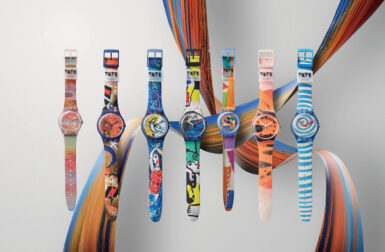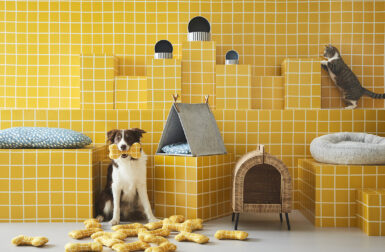Special thanks to Thomas Wold, Fringe Studio, and their client for letting us publish these photos and follow along with their project.

This was a project of collaboration between Fringe Studio, a small architecture design firm based in the San Francisco Bay Area and myself. Fringe designed the house this new piece was made for. They also served as the interior designers for the project, not a small project considering the size of the house. They asked me to help conceptualize a long credenza for the sitting room.
I started with a loose concept of stacking boxes about 17 feet long as a starting point and we went back and forth from there with many versions until the right design presented itself. I asked Fringe Studio to write a bit about the project from their point of view and here is what they had to say:
We at Fringe Studio have been collaborating with a number of vendors and it is always interesting. The people we work with have a lot of unique ideas and skills, which is why we seek them out in the first place. We then challenge them to do things that fit in the context of what we’ve been designing. This often pushes them out of their normal comfort zone, but the results are always worth it. We get great work at the end of the day and we all learn something along the way.
We sought out Thomas Wold after months of looking for manufactured furniture pieces to go in this house. When nothing seemed right, we decided to go the custom route. Thomas’s cabinets don’t look like anyone else’s, which is why he interested us.
Thomas’s instincts tend towards work that is quirky and charming, kind of like Thomas. To us, however, his initial drawings of big stacks of boxes with raised panel doors here and there and bright colors throughout were TOO quirky. We wanted something elegant and refined. It took a lot of phone calls and sketches back and forth to get to a scheme we could agree on.
Most of the design moves in this house are asymmetric, so it made sense that this cabinet would be asymmetric too. We also knew that we would be installing the owner’s Asian screen on the wall above, so that drove the form towards having a long flat surface on the top.
Having arrived at a form that none of us would have come up with on our own, we then challenged Thomas further by deciding on finishes that were also new to him: metallic automotive paint, faux oil-rubbed bronze and wenge wood. We wanted the cabinet to compliment other finishes we already had in the room, but also be different. The automotive paint especially was an enormous amount of work for Thomas to figure out how to do and get right.
The cabinet was delivered in five sections and assembled on site. The Asian screen, installed on a custom steel shelf by Walter Gorman (another collaboration with a unique result,) did not go on the wall until well after the cabinet arrived. Only then could we see how well the pieces played together. They’re getting along beautifully.
Let’s look at the design drawings first. There were 6 versions more or less. Here they are starting with the initial concept in order to the final approved design:




And, now it’s time to get to work!



Cutting of all boxes and special door condition glue ups. Most of the cases and doors were made from .75” and 1” MDF. Because MDF is very flat and mostly void of markings it is the material of choice for high gloss finishing. For the most part we did not want the final feel of the design to evoke woodworking but something seeming untouched or uncrafted.

A lot of little cut outs were needed for handle and voids behind handle in the cases. We did this simply with routers and jigs.

Testing cut parts prior to finishing. The fit and reveals between boxes and fronts had to be extremely uniform. The design was fully assembled and then tiny adjustments were made to make it fit just right.


Drawer fabrication. Solid wood drawers made with a simple lock joint. All parts were sanded and made seamless prior to the black high gloss finish.

Solid steel base. The base was made from solid sections of .5”X1.5” cold rolled steel. The welds were ground and polished smooth. Later the metal was plated with an etched bronze finish.




Finishing of the wood. This by far the most time consuming part. We did a lot prep to ensure that the parts were smooth and without blemishes. The outer parts were a high gloss silver sparkle metallic lacquer and black sparkle lacquer. The inside cases were a high gloss black.


Reassembly of parts. After finishing all the hardware was attached and the parts were all put back together.



The new credenza is wrapped up and delivered to it’s new home in five sections then attached together on site. The 17’ design scales nicely with the other furniture in the room and feels more like sculpture than furniture in the end.
Image credit: Thomas Wold and Fringe Studio.







